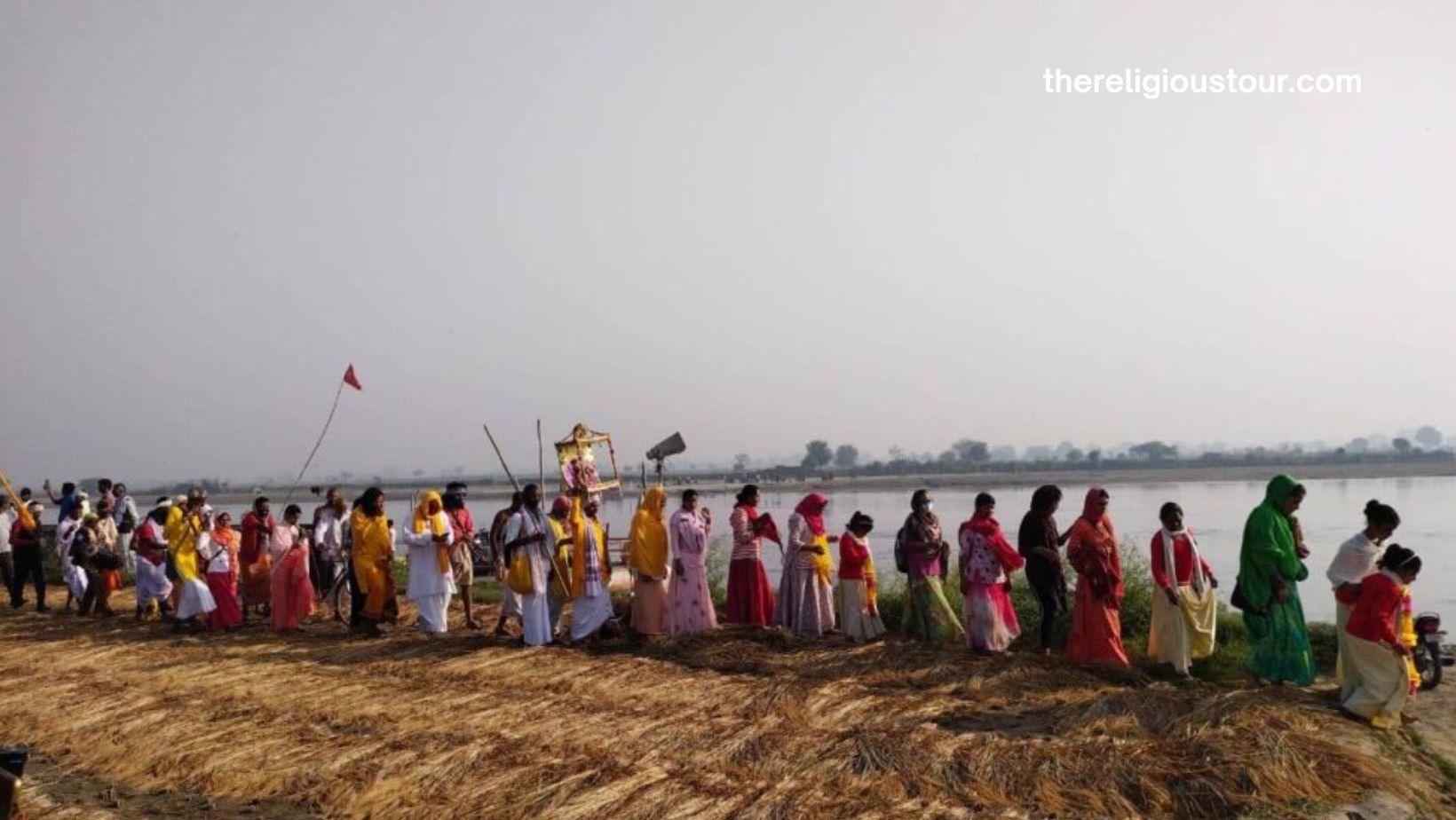The Significance of 84 Kos Yatra Among Hindus

Within the rich tapestry of India’s myriad cultures and faiths, lie a multitude of sacred customs and revered pilgrimages. Among these, the “84 Kos Yatra” holds a special place in the hearts of Hindus. This ancient pilgrimage, steeped in history and spirituality, encompasses a journey of 84 kos, a kos being a unit of distance measurement in ancient India. In this article, we will delve into the deep-rooted significance of the 84 Kos Yatra, exploring its historical origins, religious importance, and the enduring impact it has on the spiritual fabric of Hinduism.
The Origin of 84 Kos Yatra
The roots of the 84 Kos Yatra can be traced back to the pages of Hindu mythology and epic tales.It is commonly attributed to its roots within the age-old narratives of the Ramayana and the Mahabharata. As per the sacred texts, Lord Rama, a divine manifestation of Lord Vishnu, commenced a 14-year sojourn that traversed through dense forests, towering mountains, and meandering rivers. It is said that during his exile, Lord Rama traversed a distance of 84 kos, spreading the message of dharma and righteousness.
 Read more – Why is Krishna Janmashtami Celebrated? Unveiling the Divine Joy of Janmashtami Celebration
Read more – Why is Krishna Janmashtami Celebrated? Unveiling the Divine Joy of Janmashtami Celebration
Similarly, the Mahabharata, another revered epic, speaks of the Pandavas, who undertook a journey of 84 kos during their own period of exile. These narratives laid the foundation for the 84 Kos Yatra, symbolizing a sacred journey that brings one closer to the divine.
Religious Importance
- Spiritual Purification: The 84 Kos Yatra is not just a physical journey; it is a spiritual odyssey. Pilgrims believe that by undertaking this arduous journey, they cleanse their souls and attain spiritual purification. It is a way to detach from materialistic pursuits and connect with the divine.
Read more – Explore Shirdi and Get Absorbed in Spiritual Serenity - Devotion to Deities: Along the route of the yatra, pilgrims visit numerous temples and sacred sites dedicated to various deities. This pilgrimage is a demonstration of devotion to these deities, seeking their blessings for a meaningful life and spiritual growth.
- Reenactment of Epics: For Hindus, the 84 Kos Yatra is a way to relive the journeys of Lord Rama and the Pandavas. Through retracing the path they walked, pilgrims delve into the challenges and adversities that were confronted by these venerated individuals, drawing boundless inspiration from their steadfast devotion.
Read more – Explore Santura Mata Temple in Dhanaulti: A Spiritual Journey - Community and Camaraderie: The yatra is far from a solitary quest; instead, it nurtures a profound sense of community and companionship among the pilgrims. It serves as a unique opportunity for people hailing from varied backgrounds to unite in the shared pursuit of a spiritual objective.
- Charity and Service: Numerous pilgrims regard the yatra as a chance to partake in acts of benevolence and assistance, extending gestures of food, water, and refuge to both fellow travelers and individuals requiring aid, epitomizing the ideals of empathy and altruism.
- Blessings for Future Generations: It is believed that by undertaking the 84 Kos Yatra, individuals not only seek blessings for themselves but also for their ancestors and future generations. It is a way to ensure the well-being of one’s family and lineage.
Read more – Discovering the Divine: How to Explore Seth Sanwaliya at Chittorgarh
Enduring Impact
The 84 Kos Yatra continues to have a profound impact on the spiritual and cultural landscape of Hinduism. Here are some of the ways in which it endures:

Read more – Unveiling the Spiritual Marvel: A Comprehensive Guide to Exploring Tirupati Balaji
- Preservation of Tradition: In a rapidly modernizing world, the 84 Kos Yatra stands as a symbol of tradition and heritage. It serves as a reminder of the ancient customs and beliefs that have been passed down through generations.
- Tourism and Economy: The yatra attracts not only devout pilgrims but also tourists interested in exploring India’s rich religious and cultural tapestry. This influx of visitors contributes to the local economy, supporting businesses and livelihoods along the yatra route.
Read more – Exploring the Enigmatic History of Karani Mata Deshnok: A Comprehensive Travel Guide
- Interfaith Harmony: The yatra often brings people of different faiths together. It promotes interfaith harmony and understanding as individuals from diverse backgrounds come to witness and participate in this sacred journey.
- Spiritual Growth: For those who undertake the 84 Kos Yatra, it is a transformative experience. Many return from the pilgrimage with a heightened sense of spirituality, a deeper connection to their faith, and a renewed commitment to leading a virtuous life.
Read more – Embarking on a Spiritual Journey: A Comprehensive Guide to Exploring Vaishno Devi from Jaipur - Continued Relevance: Despite the passage of time, the 84 Kos Yatra remains relevant in contemporary Hinduism. It adapts to changing circumstances while preserving its core values, making it accessible to a new generation of seekers.
Conclusion
The 84 Kos Yatra holds profound importance in Hinduism, symbolizing a spiritual journey of devotion and endurance. Covering a distance of 84 Kos (approximately 252 kilometers), it mirrors Lord Rama’s epic journey to rescue Sita. Pilgrims embark on this arduous path to seek blessings, cleanse their souls, and connect with their faith on a deeper level. It signifies unwavering commitment, reiterating the timeless values of duty, righteousness, and unwavering faith that remain at the core of Hindu beliefs, enriching the spiritual tapestry of devotees.
Read more – Exploring Ayodhya from Patna – A Spiritual and Historical Journey
Tags: 84 Kos Yatra, 84 Kos Yatra remains, Braj Chaurasi Kos Yatra